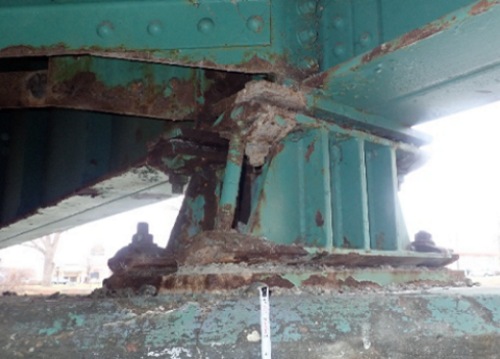A new report from the U.S. Government Accountability Office encourages the Federal Highway Administration to share more corrosion-control “best practices” with state departments of transportation and other agencies responsible for bridge maintenance.
[Above photo by the Wyoming DOT]
GAO said it interviewed FHWA, five state DOTs in Florida, Illinois, Kansas, Rhode Island, and Wyoming, plus six associations along with a literature review of several bridge studies for its report. That research discerned enough data to indicate a “significant relationship” between corrosion and bridge condition, GAO said.

The report noted state-level practices to prevent and manage bridge corrosion vary based on environmental factors and structural conditions. For example, state agencies said they regularly clean bridges exposed to seawater and deicing chemicals to remove materials that could accelerate corrosion.
Four of the five selected states prioritized rehabilitating and replacing poor condition bridges, while the fifth state said it took steps to address corrosion to preserve and maintain bridges in good and fair condition.
GAO’s study also noted that states are “transitioning” to asset management practices that emphasize bridge preservation strategies. However, officials from state agencies GAO interviewed said limited information about specific corrosion practices’ effectiveness is a “challenge” to implementing asset management practices.
For example, while officials from some states interviewed for the report said they use sealant on bridge decks to prevent corrosion, officials from another state said they do not because “they do not know how effective it is.”
As a result, GAO is recommending that FHWA’s ongoing bridge preservation efforts include “activities” that focus providing “specific corrosion practices and materials” to state agencies that prove “most effective” in preserving bridge structures.
 Nation
Nation
AAA: Pedestrian Safety Systems for Vehicles Improving
October 17, 2025 Nation
Nation

